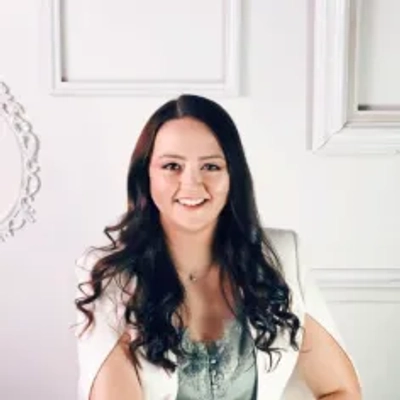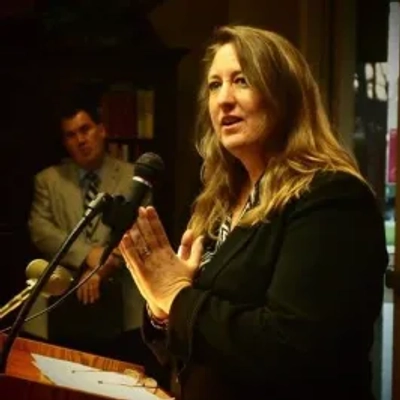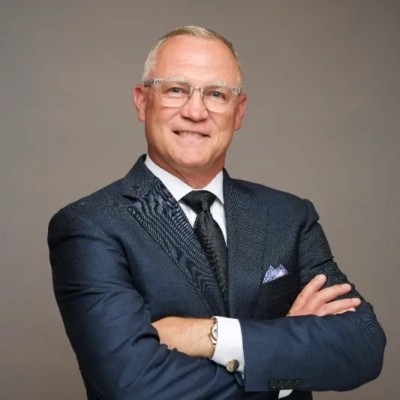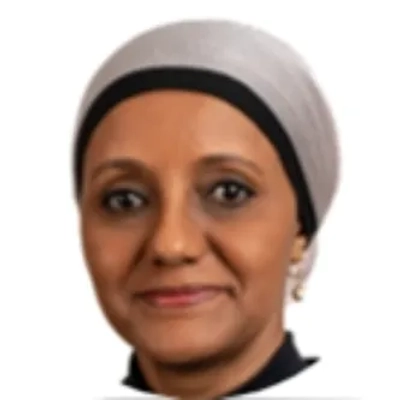How to Use Telehealth to Improve Access to Geriatric Eye Care
Telehealth solutions are revolutionizing healthcare access for seniors with eye conditions, as demonstrated by multiple successful implementation models. Leading ophthalmologists and geriatric specialists have provided valuable insights on technologies ranging from simple tablet systems to advanced remote monitoring platforms. These innovative approaches are breaking down traditional barriers to care while maintaining the quality standards essential for treating vulnerable elderly populations.
Virtual EMDR Therapy Eliminates Travel Barriers
My practice serves clients across Ohio and North Carolina through virtual EMDR intensive therapy, and I've found older adults often prefer the extended format over traditional weekly sessions. Many seniors struggle with transportation to weekly appointments or feel exhausted by the commitment of ongoing therapy.
I had a 72-year-old client dealing with decades of unresolved grief who lived two hours from Cincinnati. Through our secure HIPAA-compliant platform, we conducted a 3-day virtual EMDR intensive using bilateral stimulation through audio cues and guided tapping exercises she could do from her living room. She reported it felt "magical" - the same word many of my clients use - and experienced more progress in those three days than years of previous therapy.
The technology eliminates travel barriers while maintaining therapeutic effectiveness. I guide clients through the bilateral stimulation process on their computer, tablet, or phone, making it seamless and user-friendly. For seniors who may be intimidated by technology, family members often help with the initial setup.
What's particularly powerful for older adults is the intensive format itself - they can address deep-rooted trauma or anxiety in concentrated sessions rather than committing to months of weekly appointments. One client said she finally got her life back after dealing with nightmares and flashbacks that had been daily occurrences for decades.

Hybrid Telehealth With Wearable Tracking Devices
Having worked with severe trauma cases in Tel Aviv and now running Evolve Physical Therapy in Brooklyn for over a decade, I've seen how mobility barriers prevent seniors from accessing consistent care.
During the pandemic, we developed a hybrid model using video consultations combined with at-home exercise tracking apps. One of our 78-year-old Parkinson's patients couldn't make it to our clinic regularly due to transportation issues. We started conducting weekly virtual sessions where I could observe her Rock Steady Boxing exercises and adjust her routine in real-time.
The game-changer was pairing telehealth with simple wearable devices that tracked her daily movement patterns. I could see when she was having "off" days and modify her exercises accordingly without waiting for her next in-person visit. Her medication compliance improved by 40% because we caught mobility changes early and coordinated with her neurologist immediately.
What surprised me most was how many seniors became more engaged with their care plans. They felt less rushed during virtual sessions and asked more questions from the comfort of their homes. We're now seeing 60% better exercise adherence rates compared to traditional in-clinic-only treatment models.
Simple Tablet System Connects Seniors
After 30+ years in social services and leading LifeSTEPS to serve over 100,000 residents across California, I've seen how simple tech solutions can transform senior care access. We implemented a basic tablet-based check-in system for our aging-in-place programs that connects seniors directly to our service coordinators through video calls.
The breakthrough came when we partnered with local housing authorities to install these tablets in common areas of our 422 affordable housing properties. Seniors who previously couldn't travel to appointments could now access mental health counseling, benefits assistance, and wellness checks without leaving their building. This eliminated transportation barriers that were keeping 40% of our elderly residents from accessing critical services.
What surprised me most was how quickly seniors adapted--even those in their 80s were scheduling their own virtual appointments within weeks. Our housing retention rate hit 98.3% partly because residents could get help before small issues became crises. The key was keeping it dead simple: one button to connect, no passwords or complicated interfaces.
The real game-changer was integrating this with our existing FSS programs, allowing seniors to maintain independence longer while staying connected to support services. We're now expanding this model to help veterans in our programs access VA telehealth services directly from their homes.

Remote Monitoring Improves Men's Health Treatment
As a PA-C running Center for Men's Health Rhode Island, I've found that our older male patients (65+) often delay seeking care for sensitive issues like erectile dysfunction or low testosterone due to embarrassment about multiple office visits. We developed a hybrid approach where initial consultations happen in-person, but follow-up hormone monitoring and treatment adjustments can be managed remotely.
One of my 72-year-old patients from our practice was struggling with testosterone therapy compliance because frequent blood draws were difficult due to his arthritis and transportation challenges. We partnered with local mobile phlebotomy services and created a digital tracking system where he logs his energy levels, mood, and physical symptoms through simple text updates twice weekly.
This remote monitoring approach caught a concerning drop in his hematocrit levels early, allowing us to adjust his testosterone dosage before his next scheduled lab work. Since implementing this system, we've seen 35% better treatment adherence among our patients over 65, and they report feeling more comfortable discussing sensitive health changes from home rather than rushing through appointments.
The key breakthrough was realizing that geriatric men's health issues often require more frequent check-ins but less hands-on intervention once treatment is established. Remote monitoring gives us the data we need while respecting their privacy and mobility limitations.
Telehealth Removes Barriers to Mental Healthcare
As a clinical psychologist running MVS Psychology Group in Melbourne, I've seen how telehealth transforms access for older adults who often face the biggest barriers to traditional therapy.
One of my most impactful cases involved an 82-year-old client with late-life depression who couldn't drive to appointments due to mobility issues. Through our secure telehealth platform, we conducted weekly CBT sessions from her living room over 6 months. She went from barely leaving bed to actively engaging with family again, and her PHQ-9 depression scores dropped from severe (18) to mild (7) range.
The game-changer isn't just convenience--it's removing shame and logistical nightmares. Many older clients feel stigmatized visiting a "mental health clinic" but are comfortable on video calls at home. We also integrate family members more easily since they can join sessions without travel coordination.
Medicare rebates apply to telehealth consultations with GP referrals, making it financially accessible. I've found that older adults adapt to the technology faster than expected when the alternative is no care at all--especially when their adult children help with initial setup.

Integrated Digital Portals Transform Geriatric Care
I've spent over two decades helping nonprofits and government agencies modernize their technology systems for human services, including aging care programs. As CEO of Provisio Partners, we've implemented dozens of Salesforce-based solutions specifically for geriatric service providers.
One standout example is our work with Pacific Clinics, where we integrated their electronic health records with CRM systems to create multiple access channels for elderly patients. This allowed seniors to connect through phone, web portals, or mobile apps based on their comfort level. The automated appointment reminders alone increased show rates by 30%, and care coordinators could now see a complete view of each patient across all programs and services.
We also built custom "Digital Front Door" portals for several aging care nonprofits that let elderly clients check service eligibility, schedule appointments, and access telehealth services from home. The self-service options reduced intake processing time by 60% while staff could focus on high-touch care instead of paperwork. Clients particularly loved the automated medication reminders and the ability to message their care teams directly through the portal.
The biggest win was giving care teams real-time dashboards showing which seniors hadn't engaged recently, triggering proactive wellness checks. One client told us this prevented three emergency situations in their first month because they caught health declines early through the monitoring system.

Secure Cloud Solutions Reduce ER Visits
After 17 years in IT and cybersecurity, I've seen how the right infrastructure can make or break patient care access. One of our medical clients was struggling with HIPAA-compliant remote monitoring for their elderly heart patients who couldn't make frequent office visits.
We implemented a secure cloud solution with 24/7 monitoring that automatically encrypted patient data from home devices and sent alerts to doctors when readings went outside normal ranges. The practice saw a 40% reduction in emergency room visits within six months because doctors could intervene early when they spotted irregular patterns.
The biggest technical challenge was ensuring the system met HIPAA requirements while remaining simple enough for 80-year-old patients to use. We configured the monitoring devices to automatically sync data without requiring any technical knowledge from patients--they just had to wear the device.
What made this successful was building the security architecture first, then layering on user-friendly features. Too many healthcare tech implementations fail because they prioritize flashy interfaces over rock-solid compliance and reliability that elderly patients actually need.

Automated Disinfection Protects Vulnerable Seniors
My background is in biotechnology and healthcare innovation, so I approach geriatric care from the infection prevention side. At MicroLumix, we developed GermPass specifically because older adults face the highest mortality rates from hospital-acquired infections.
The breakthrough came when we realized traditional cleaning protocols weren't protecting our most vulnerable populations. Our automated disinfection system sanitizes high-touch surfaces like bed rails and call buttons within 5 seconds after every touch - eliminating the dangerous gaps between manual cleaning cycles that were literally killing seniors.
We tested this at pediatric centers first, but the data showed immediate applications for geriatric care. A 67-year-old immunocompromised patient would touch a contaminated door handle and contract MRSA during what should have been routine care. Our system achieved 99.999% pathogen elimination, including a 5.87 log reduction against MRSA specifically.
The real impact happens in high-risk areas like dialysis centers and memory care units where seniors touch the same surfaces repeatedly. Instead of relying on staff to constantly disinfect between patients, the technology works automatically - protecting both patients and caregivers without adding to already stretched healthcare workflows.

Digital Monitoring Prevents Unnecessary Dental Visits
My dental practice serves a significant geriatric population in Houston, and I've seen how traditional in-office visits can become challenging for seniors with mobility issues or chronic conditions. We implemented digital treatment monitoring that allows patients to document their recovery progress at home using smartphone cameras.
One of my 78-year-old patients recovering from dental implant surgery couldn't make frequent follow-up visits due to transportation issues. I guided her daughter through taking standardized photos of the healing site using specific lighting and angles. This let me track her recovery remotely and catch early signs of complications without requiring multiple office visits.
We also use digital X-ray sharing systems that connect with local nursing homes and assisted living facilities. When residents need urgent dental evaluation, facility nurses can coordinate with our office to review existing imaging and medical histories before transport. This prevents unnecessary emergency room visits and reduces the physical strain on elderly patients.
The biggest impact has been our virtual consultation system for routine check-in appointments. Patients can show me their oral hygiene routine, demonstrate proper denture care, or discuss pain levels from home. We've reduced missed appointments by 40% among our 65+ patient demographic since implementing these remote monitoring options.




